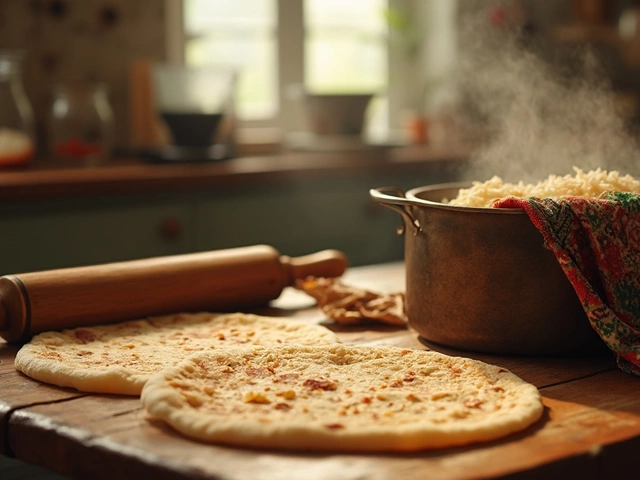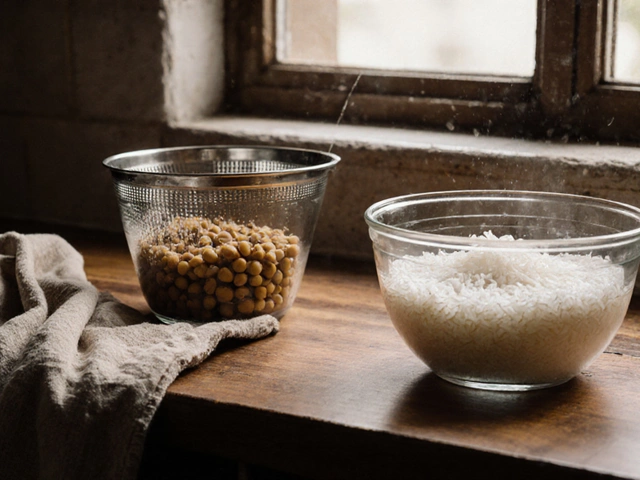So you just made a fresh batch of paneer and now you’re staring at a pot full of yellowish liquid—whey. Most people dump it without a second thought, but hang on. That stuff is basically a protein-packed drink hiding in plain sight.
If you’re asking whether it’s okay to drink the whey left after making cheese, the short answer is yes. This liquid isn’t some weird byproduct; it’s full of vitamins, minerals, and lots of protein. Think of it as the original sports drink, except homemade, natural, and free from fake flavors.
Whey from homemade paneer isn’t just drinkable—it’s actually pretty good for you. It has calcium, B vitamins, and a mix of easy-to-digest proteins. This means you can sip it as is, blend it into a smoothie, or use it as a base for soup. There’s no need to waste it or feel guilty about tossing all that nutrition down the sink.
And if you’re worried about taste, don’t be. Whey is mildly tangy, a bit like buttermilk, but not as thick. You can tweak the flavor with a pinch of salt, honey, or lemon if plain isn’t your thing. There are a bunch of easy ways to put it to use, and you’ll probably wish you’d known about this sooner.
- What is Whey Anyway?
- Is Whey Safe to Drink?
- Ways to Use Whey in Your Kitchen
- Tips and Fun Facts About Whey
What is Whey Anyway?
When you make whey at home—like after making paneer—what you’re seeing is the liquid left once the milk curdles and separates from the curds. It’s not waste; it’s part of the milk that didn’t turn into cheese. Most of what’s in whey is water, but there’s also a good amount of protein, lactose (milk sugar), and vitamins.
A lot of people don’t realize whey comes in two main types: sweet whey and acid whey. Sweet whey is what you get from cheeses like ricotta or paneer (where you use lemon juice or vinegar). Acid whey is from acidic cheeses like yogurt cheese. The main difference is the taste and how you can use it—but both are totally safe to drink if you handle your milk cleanly. And surprisingly, the nutrition isn’t that different between the two.
Check out what’s really in a cup (240 ml) of homemade whey:
| Nutrient | Amount per cup |
|---|---|
| Calories | ~ 25 |
| Protein | ~ 2 g |
| Calcium | ~ 40 mg |
| Lactose | ~ 1.5 g |
| B Vitamins | Trace amounts |
You might see folks online pouring their whey down the drain. But nutrition experts say otherwise. As the National Dairy Council puts it:
“Whey left after cheese making retains many of the nutrients from milk, and with its high-quality proteins, it can be a great ingredient to add back into cooking or smoothies.”
The main thing to remember: If your milk was good and your kitchen’s clean, homemade whey is just a bonus—not something to throw away.
Is Whey Safe to Drink?
People often wonder if it’s actually safe to drink the leftover liquid after making cheese or paneer. The good news is, yes, it’s safe for most people. Whey is just the liquid part of milk that separates from the curds when you add acid—usually lemon juice or vinegar—to hot milk. It’s not some strange chemical mix, it’s just milk minus the solids.
Let’s get into specifics. Whey from homemade paneer is free from additives, and it’s not spoiled. If you used clean pots and utensils, the finished whey is basically as clean as the milk you started with. You don’t need to boil it again or filter it, unless you see big chunks floating around (which you can just strain out). Homemade whey contains:
- Protein (usually 1-2 grams per 100ml, according to the USDA)
- Calcium (almost as much as the original milk)
- B vitamins (like riboflavin and B12)
- Very little fat—it’s mostly water
- Mild natural acidity (safe for most stomachs)
Here’s a look at what’s in about one cup (240ml) of whey:
| Nutrient | Approximate Amount |
|---|---|
| Protein | 2g |
| Calcium | 70-80mg |
| Vitamin B2 (Riboflavin) | 0.2mg |
| Calories | 10-15 |
Whey is low in calories and easy to digest for most folks. However, if you’re lactose intolerant, you should be a little careful. Whey does have some lactose, just less than the original milk. People with milk allergies or kidney problems might also want to check with a doctor.
So as long as you store it in the fridge and use clean hands and containers, drinking homemade whey is not just safe, it’s actually good for you. Try a small glass before pouring it, to see how your body reacts. For most people, it’s a simple, healthy swap for plain water or juice.

Ways to Use Whey in Your Kitchen
That leftover whey is more useful than most people think. Instead of pouring it away, here are some easy and practical ways to put it to work at home. With whey, you get nutrition, flavor, and a chance to cut food waste all at once.
- Drink it as is: Chill the whey and sip it straight up, especially after workouts. It’s light, a bit tangy, and loaded with quick-absorbing protein. If the taste is too much alone, try mixing in a splash of lemon juice or honey.
- Blend it into smoothies: Drop the milk or water and use whey as your smoothie base. It bumps up the protein content without changing the color or texture. Good for fruit smoothies when you want an extra nutrition kick.
- Use in baking: Whey can step in for water or even milk in most bread, muffin, or pancake recipes. It makes baked goods a little fluffier and boosts the nutrition factor, too.
- Soup and curry base: Pour whey into homemade soups, stews, or curries instead of water. It will add a subtle tang and round out the flavors without overpowering the recipe. Onion-tomato curries, lentil soups, and veggie broths work especially well.
- Soak or cook grains: Get more from your rice or oatmeal by cooking them in whey instead of plain water. It adds a hint of flavor and ups the protein, which is great for breakfast or meal prep.
- Fermentations: Some folks like to use whey to kickstart sourdough starters or even homemade pickles. It can help get the process going faster thanks to those live cultures.
Here’s a quick look at how whey stacks up nutritionally, per cup (240ml):
| Component | Amount (per cup) |
|---|---|
| Calories | ~60 |
| Protein | ~2g |
| Calcium | ~125mg |
| Vitamin B2 (Riboflavin) | ~0.2mg |
| Lactose (sugar) | ~13g |
Not only do you cut waste, but adding whey into your daily routine gives your food a natural shot of nutrition. So next time, hold onto that cloudy liquid and watch how many different spots in your kitchen it can shine.
Tips and Fun Facts About Whey
There’s a lot more to whey than meets the eye. It’s not just some sidekick to homemade paneer—this liquid packs a punch in the nutrition department and is way more useful than most folks realize.
- Whey is mostly water, but it contains about half the milk’s original nutrients. That means you’re not just saving liquid; you’re saving 50% of the good stuff from your milk purchase.
- Whey’s protein is what you find in a lot of fitness shakes. Those pricey powders? They’re mostly dried and processed whey.
- If you use lemon or vinegar to curdle your milk, your whey will taste tangier than if you use yogurt. Tangy or mild, both are safe to drink—you just might want to sweeten the sharper version.
- Gardeners swear by whey as a gentle fertilizer for acid-loving plants like blueberries or tomatoes. Just dilute it with water, and your plants get a minor nutrient boost.
- Whey can step in for water or milk in many baking recipes. Try using it in pancakes or bread—the result is softer, and you sneak in extra nutrients without anyone noticing.
Want to see how it measures up? Here’s how a standard cup of whey from homemade paneer (about 240 ml) stacks up on nutrition:
| Nutrient | Amount per cup (240 ml) |
|---|---|
| Calories | ~30 kcal |
| Protein | 1 g |
| Calcium | ~50 mg |
| B Vitamins | Trace amounts |
| Lactose | ~6 g |
If your stomach is sensitive to lactose but you’re okay with small amounts, sipping a little whey usually isn’t a problem. Just start slow to see how your body reacts.
One last thing: if you don’t want to drink it, don’t pour it out just yet! Try using it in these ways:
- Add to dough for softer rotis, parathas, or naan.
- Stir into dal or soup for a richer flavor.
- Use as a base when cooking rice or pasta.
The next time you make paneer, think of whey as a bonus, not a waste product. There’s no need to toss nutrition down the drain when you’ve got so many easy ways to use it up.
- Poplular Tags
- whey
- homemade paneer
- cheese making
- whey recipes
- drink whey











